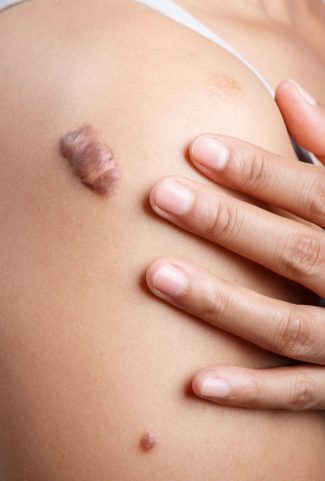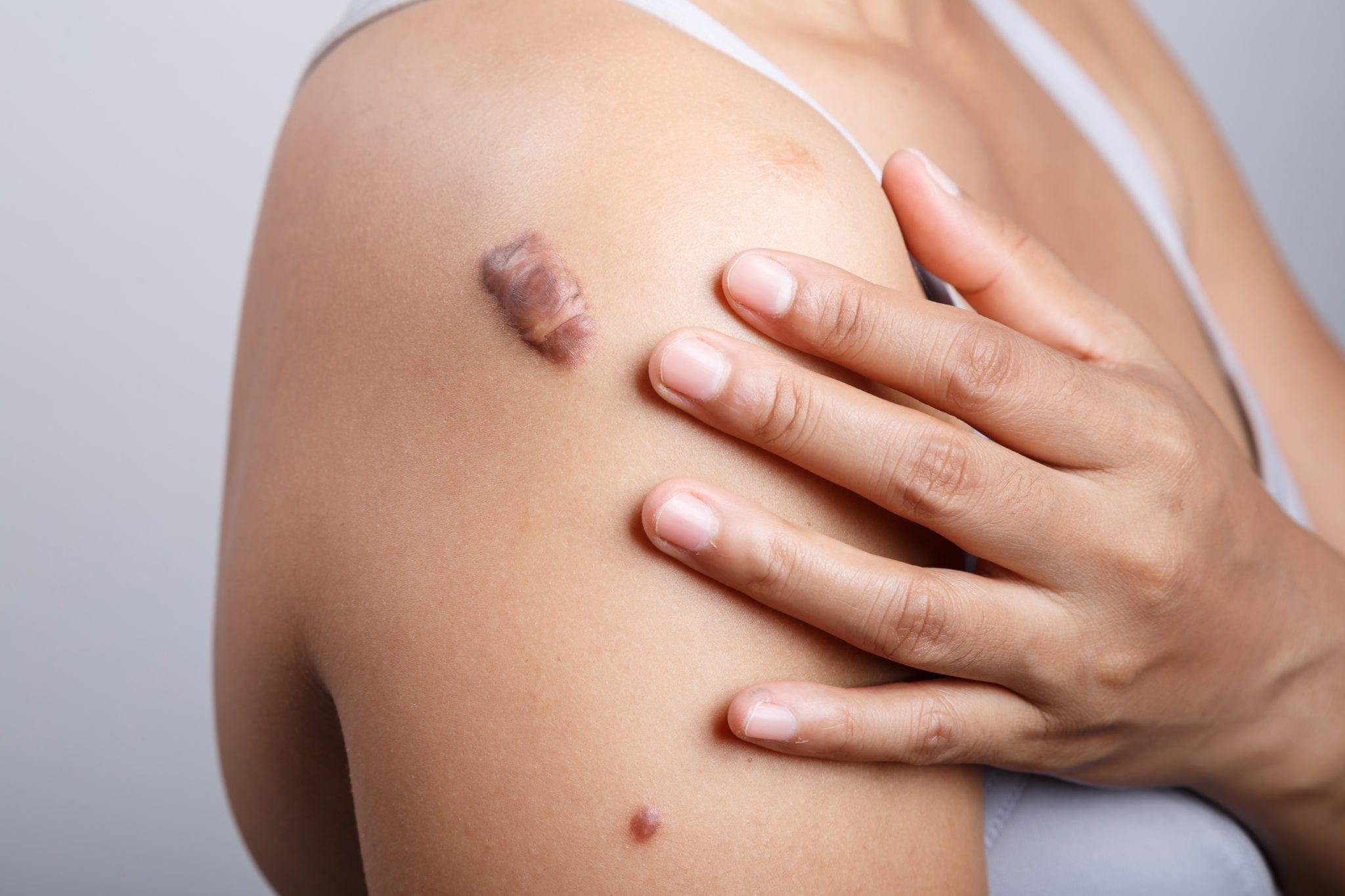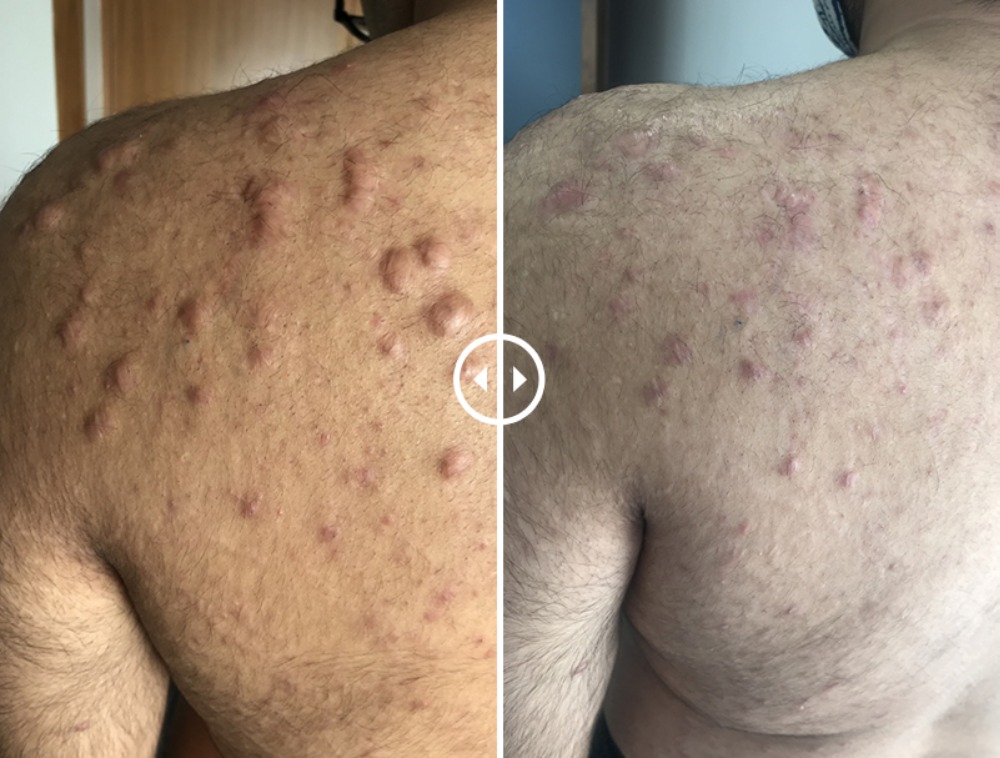Keloids
What are Keloids?
A Keloid is a type of raised scar that forms when the body overproduces collagen during the healing process of a wound or an injury.

What causes Keloids?
Keloids can develop from any injury to the skin, including surgical incisions, acne scars, burns, vaccinations, and even minor cuts or scratches. Some individuals are more prone to Keloid formation due to various factors like genes.

What do keloids look like?
Keloids are raised, smooth, shiny, and often have a rubbery texture. They may vary in color from pink to red or brown, depending on the individual’s skin tone.
How are Keloids treated?
Our experts suggest various treatment options for Keloids, which include — Steroid Injections, Silicone Gel or Sheets, Cryotherapy, Laser Therapy, Surgical Removal, and Radiation Therapy. Combination therapies may also be used for more stubborn Keloids.
Some home remedies may also help reduce the appearance of Keloids, such as applying pressure dressings, massaging the scar tissue, using onion extract or vitamin E creams, or applying silicone gel sheets. However, results may vary, and it’s essential to consult a skin specialist before trying any home remedies.

Keloid care
What sets our Keloid care apart?
Keloids can develop from any injury to the skin, including surgical incisions, acne scars, burns, vaccinations, and even minor cuts or scratches. Some individuals are more prone to Keloid formation due to various factors like genes.
faq
Are Keloids dangerous?
Keloids are not usually dangerous to one’s health. They can be itchy, painful, or cause discomfort, especially if they are large or located in areas prone to friction.
Can Keloids be prevented?
While it is not always possible to prevent Keloid formation, there are steps one can take to reduce the risk — such as avoiding unnecessary piercings or tattoos, treating acne promptly, and protecting wounds from trauma or excessive stretching.
Can Keloids come back after treatment?
Yes, Keloids have a tendency to recur, especially if they are not adequately treated or if the underlying cause of their formation is not addressed. Close monitoring and follow-up care are essential to manage Keloids effectively.
Can anyone develop Keloids?
Keloids can develop in people of any age, or skin type, but they are more common in individuals with darker skin tones and those with a family history of Keloid formation.
Are there any complications associated with Keloids?
While Keloids themselves are not usually harmful, they can cause cosmetic concerns, discomfort, and emotional distress. In some cases, large Keloids may restrict movement or affect joint function, requiring medical intervention. Additionally, the treatments for Keloids may carry their own risks and side effects.

